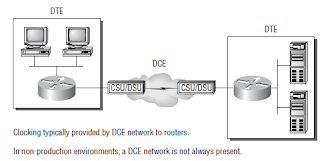Let’s spend a little time on Point-to-Point Protocol (PPP). Remember that it’s a Data Link layer protocol that can be used over either asynchronous serial (dial-up) or synchronous serial (ISDN) media. It uses Link Control Protocol (LCP) to build and maintain data-link connections. Network Control Protocol (NCP) is used to allow multiple Network layer protocols (routed protocols) to be used on a point-to-point connection.
Since HDLC is the default serial encapsulation on Cisco serial links and it works great, why and when would you choose to use PPP? Well, the basic purpose of PPP is to transport layer 3 packets across a Data Link layer point-to-point link, and it’s nonproprietary. So unless you have all Cisco routers, you need PPP on your serial interfaces—the HDLC encapsulation is Cisco proprietary, remember? Plus, since PPP can encapsulate several layer 3 routed protocols and provide authentication, dynamic addressing, and callback, PPP could be the best encapsulation solution for you instead of HDLC.
Figure 1 shows the protocol stack compared to the OSI reference model.
PPP contains four main components:
EIA/TIA-232-C, V.24, V.35, and ISDN A Physical layer international standard for serial communication.
HDLC A method for encapsulating datagrams over serial links.
LCP A method of establishing, configuring, maintaining, and terminating the point-to-point connection.
NCP A method of establishing and configuring different Network layer protocols. NCP is designed to allow the simultaneous use of multiple Network layer protocols. Some examples of protocols here are IPCP (Internet Protocol Control Protocol) and IPXCP (Internetwork Packet Exchange Control Protocol).
Burn it into your mind that the PPP protocol stack is specified at the Physical and Data Link layers only. NCP is used to allow communication of multiple Network layer protocols by encapsulating the protocols across a PPP data link.
Since HDLC is the default serial encapsulation on Cisco serial links and it works great, why and when would you choose to use PPP? Well, the basic purpose of PPP is to transport layer 3 packets across a Data Link layer point-to-point link, and it’s nonproprietary. So unless you have all Cisco routers, you need PPP on your serial interfaces—the HDLC encapsulation is Cisco proprietary, remember? Plus, since PPP can encapsulate several layer 3 routed protocols and provide authentication, dynamic addressing, and callback, PPP could be the best encapsulation solution for you instead of HDLC.
Figure 1 shows the protocol stack compared to the OSI reference model.
PPP contains four main components:
EIA/TIA-232-C, V.24, V.35, and ISDN A Physical layer international standard for serial communication.
HDLC A method for encapsulating datagrams over serial links.
LCP A method of establishing, configuring, maintaining, and terminating the point-to-point connection.
NCP A method of establishing and configuring different Network layer protocols. NCP is designed to allow the simultaneous use of multiple Network layer protocols. Some examples of protocols here are IPCP (Internet Protocol Control Protocol) and IPXCP (Internetwork Packet Exchange Control Protocol).
Burn it into your mind that the PPP protocol stack is specified at the Physical and Data Link layers only. NCP is used to allow communication of multiple Network layer protocols by encapsulating the protocols across a PPP data link.
.png)


